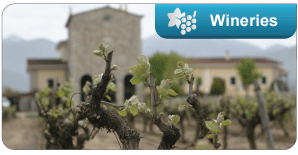Robola
The variety’s Italian-sounding name, together with its cultivation in the Ionian Islands located close to Italy, have led some to claim that the Robola grape variety is actually the same with the Ribolla Gialla variety cultivated in northeastern Italy. Whatever the case may be, striking differences between the two do exist, rendering Robola a truly unique and highly promising variety both in terms of morphology and taste. If properly cultivated and vinified, the grapes of Robola reward the effort in the best way imaginable, yielding dry white wines of refined character and expressing beautifully their terroir of origin.
Particularly prone to pests as well as drought, Robola is ever in pursuit of the appropriate conditions that will assist it in unfurling its virtues in all their glory. The variety is mainly planted in Central Greece and the Ionian Islands. Among the Ionian Islands, Kefallonia is more widely known for the cultivation of Robola where the variety yields the PDO Robola of Cephalonia wines. Despite its vulnerable character, which requires barren, preferably mountain terrain, the variety is exceptionally productive to the point where restricting yields has become necessary in seeking to obtain a good Robola wine. As the variety is prone to oxidation, an equally important requisite is careful vinification that normally takes place entirely in stainless steel tanks. However, once all these requisites have been fulfilled, Robola wine emerges endowed with a “European” minerality, medium body, and excellent oxidation which are evocative of a good PDO Santorini wine. When young, it may be likened to—why not?—a Chablis and—after it has aged a few years—even a Riesling may be a fitting comparison to a Robola!
Overall, Robola is elegant and capable of offering a sophisticated “goût de terroir” character which, at a time of globalized tastes, will certainly strike a sensitive chord with lovers of culture and wine.


